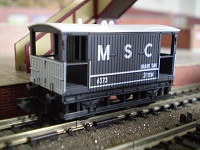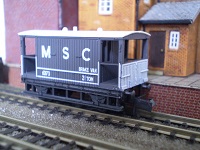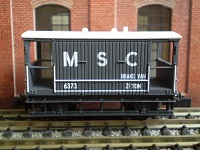The proud city of Manchester was at the forefront of the Industrial Revolution which transformed England in the late
18th and early 19th centuries, employing thousands of workers in mills and factories to churn out high-quality
manufactured products at prices which ordinary people could afford. There was a thriving export market for all these
goods as well, but to reach the outside world they had to go through the Port of Liverpool some 40 miles away, with all
the transport and handling costs which this involved.
By the 1870s the UK economy was deteriorating into the so-called
Long Depression, and the businessmen of Manchester were looking for a more economical way to export their wares. One
of their number was a boilermaker by the name of Daniel Adamson, who proposed the construction of a ship canal to
link Manchester to the Mersey estuary, and he founded a consortium of local bigshots to promote the scheme. They
commissioned civil engineer Edward Leader Williams to come up with a plan for this vast and monumentally expensive
undertaking, and by 1885 this had been approved by Parliament.
Construction started in late 1887, and six years and 15
million pounds later the brand new Manchester Ship Canal opened to traffic. Its 36-mile route, slightly longer than
the Panama Canal, made it the longest river canal in the world, and it enabled the newly-created Port of Manchester to
become the third-busiest port in the UK despite being 40 miles from the coast. And alongside the canal ran the
Manchester Ship Canal Railway, linking all the dockside industries together. At its peak it was the largest private
rail network in the country, with more than 230 miles of track, and it carried vast amounts of goods in wagons of all
descriptions to and from the docks, factories and chemical works along its route.
There were connections to the L&Y
and the L&NWR to the north of the canal and the CLC to the south, where the wagons could pass to and from the
national rail network and on to the rest of the country. The goods trains rumbling along by the side of the canal
would need a brake van for the guard to travel in, of course, and the MSCR had their own fleet of vans painted up in
a smart dark grey & white livery. These came into service in the pre-grouping steam era of the early 1900s, and
remarkably lasted until the mid-1980s. The Manchester Ship Canal Railway escaped the nationalisation of 1948, and so
the vans still carried their company colours until the end. The rail traffic declined in the modern era, and the MSC
rail system declined with it, although the final section at Trafford Park remained operational until 2009. The ship
canal itself is still in service, though, and there are hopes that this legacy of Victorian engineering ambition may yet undergo a renaissance as part of the Atlantic Gateway project to revitalise north-west trade.
Give your layout a brake with our Manchester Ship Canal brake van.
To buy this wagon along with our Murgatroyd salt wagon, please go to our 'N' Sets page.
|









